PRODUCTS
High-yield corn fertilizer management
High-yield corn fertilizer management
1. Characteristics of corn fertilizer requirement
1.1 Nutrient requirements in different growth periods
The ratio of nutrients required by corn during each growth period is different. From emergence to jointing, corn absorbed 2.5% nitrogen, 1.12% available phosphorus and 3% available potassium. From jointing to flowering, it absorbed 51.15% of nitrogen, 63.81% of available phosphorus and 97% of available potassium. From flowering to maturity, it absorbed 46.35% of nitrogen, 35.07% of available phosphorus and 0% of available potassium.
1.2 Nutritional requirements in the whole growth period
Corn needs to absorb a variety of nutrient elements from the soil during its growth, among which nitrogen is the most, potassium is the second, and phosphorus is the third. Generally, 2.5kg of nitrogen, 1.2kg of P2O5 and 2.0kg of KCl should be absorbed from the soil for every 100kg of grain produced. The ratio of N, P and K is 1: 0.48: 0.8.
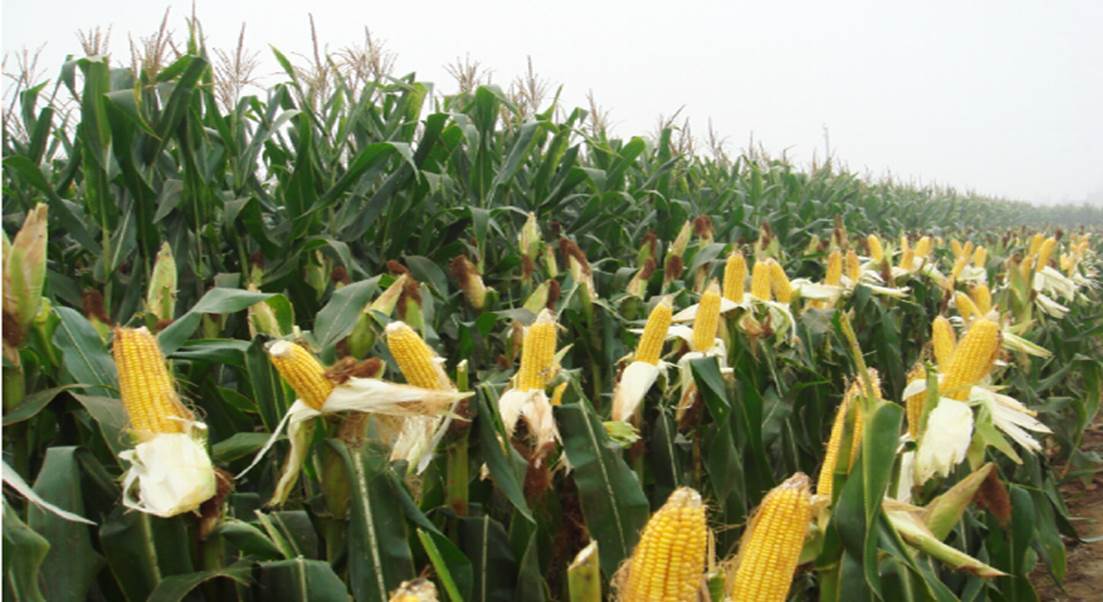
2. The principle of corn fertilization
Mainly base fertilizer, supplemented by seed fertilizer and topdressing; Organic fertilizer is the main component and chemical fertilizer is the auxiliary component. Apply basic fertilizer, phosphorus and potassium fertilizer early, and apply topdressing by stages. Fertilization methods mostly use the mixture of farm manure and phosphorus, potassium and micro-fertilizer as base fertilizer, and nitrogen fertilizer is the main topdressing. Fertilization amount should be adjusted according to factors such as yield index, soil fertility, fertilizer,fertilizer utilization rate, density and variety.
At present, the general situation of corn production is: nitrogen is basically balanced or slightly surplus; phosphorus is accumulated in the soil; However, potassium input is obviously less than crop utilization, resulting in a large loss. Medium and trace elements are relatively deficient. In production, it is necessary to apply the formula fertilization technology. Scientifically fertilize according to the soil conditions and application amount recommended by experts, combining farm manure, chemical fertilizer and micro-fertilizer, and combining base fertilizer, seed fertilizer and topdressing.
Farm manure: mainly feces.
Chemical fertilizers: such as NPK.
Micro-fertilizer: microorganism, humic acid fertilizer, etc.
Base fertilizer: fertilizer applied for the first time before sowing or transplanting, or in every growing season of perennial fruit trees. Fertilizers for later absorption of crops.
Seed fertilizer: when sowing or transplanting, fertilizer is applied near seeds or mixed with seeds to supply nutrients needed by crops at the early growth stage.
Topdressing: fertilizer applied to supplement and adjust nutrition during plant growth, which can be absorbed and utilized in a short time.

Early Fertilization of Wheat
3. How to determine the application rate?
Fertilization is the most important technical measure to increase corn yield. In China, the effect of chemical fertilizer on increasing corn yield accounts for 24% of all measures to increase corn yield. In corn production, affected by many factors, the amount of fertilizer applied is often inconsistent with the amount of fertilizer needed. A reasonable amount of fertilizer is an important basis for cultivating high light efficiency groups and improving the quality of corn groups.
Determine the application rate according to the planned output, soil fertility, fertilizer properties and seasonal utilization rate, that is, sample the soil before planting to determine the content of soil organic matter, total nitrogen, available phosphorus and available potassium, and then determine the fertilizer amount according to the following formula:
Application rate (kg/ha) = Nutrient required for planned yield-Soil fertilizer supply amount (kg/ha)/Nutrient content in fertilizer (%) × Fertilizer utilization rate (%).
However, the above method is very inconvenient in the actual production process. At present, the simpler method is the following formula (the basic yield is the corn yield on the plot without fertilization):
Application rate (kg/ha) = (Target yield-Basic yield) × Nutrient concentration (%) per 100 kg of crop (dry)/fertilizer utilization rate (%).
According to this method, it can save fertilizer and increase yield in shajiang black meadow soil area of Huaibei, Jiangsu Province. In the cultivation of summer corn in Huaibei, Jiangsu Province, in sandy soil with soil organic matter content of 1.14%, total nitrogen of 0.065%, available phosphorus of 10.9 mg /kg and available potassium of 30.0 mg /kg, when the yield per hectare is 11,379 kg, the amount of fertilization is N 310.5 kg, P 205813.6 kg and K 20265.5 kg per hectare.
In corn production, it is difficult to determine the reasonable application rate due to the influence of factors such as region, climate, variety and cultivation conditions. Therefore, it is necessary to timely adjust and control according to the growth process and the population quality theory, and formulate fertilizer adjustment and control measures, so as to improve the population quality of corn more effectively.
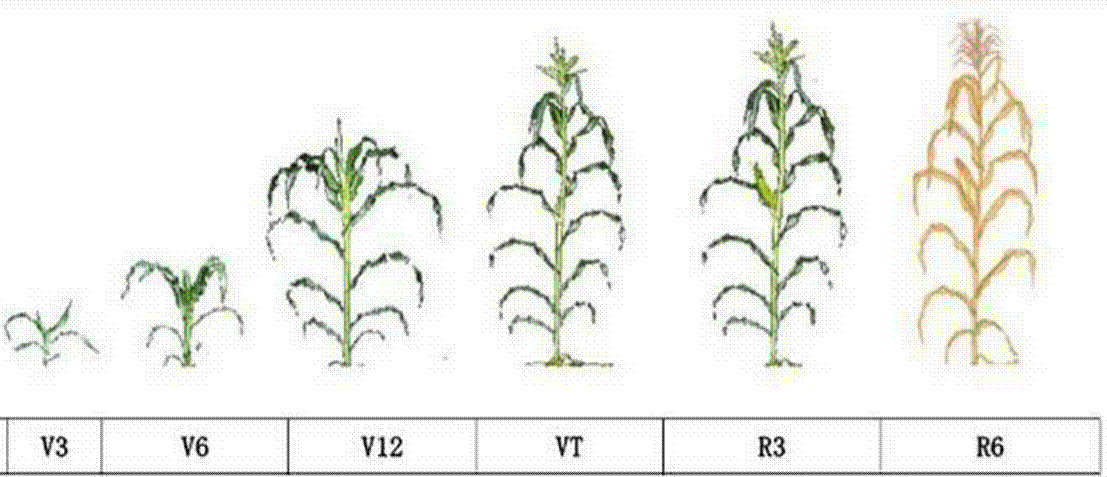
| International description | V3 | V6 | V12 | VT | R3 | R6 |
| Domestic description | Seedling stage | Jointing stage | Big trumpet stage | Tasseling stage | Milk stage | Maturing stage |
| Criterion | The third leaf is fully unfolded. | The sixth leaf is fully unfolded, and the male growth spike begins to stretch. | The twelfth leaf fully unfolds and the tassel enters the floret differentiation stage. | The last branch of tassel is visible before silking. | Corn grain turns yellow, and its endosperm is milky and then pasty. | The grain of the plant is dry and hard, the black layer appears at the base of the grain, and the milk line disappears. |
4. How much fertilizer should be applied in the big trumpet stage of corn?
The amount of topdressing at the big trumpet stage should be sufficient, and the ear fertilizer is a key fertilizer to realize more ears and grains of summer corn. For fields with general fertility level, it is planned to yield 500-600㎏ corn per mu. On the basis of applying seed fertilizer or seedling fertilizer in the early stage, 15-20kg of urea should be applied for spike fertilizer according to 50% of the total amount of nitrogen applied. As the application period of spike fertilizer is at the high temperature in summer, in order to reduce the loss of nitrogen volatilization and improve the utilization rate of fertilizer, the fertilizer should be applied deeply according to the soil moisture. If the soil is dry, it must be topdressed with water, and then covered with soil at random. If it is raining continuously, it can be sprinkled with the rain.
5. Spring corn fertilization technology points
5.1 Fertilization principle.
(1) Combine organic fertilizers with inorganic fertilizers, preferably organic fertilizers that are decomposed and have a high water content.
(2) Deep fertilization, the fertilization depth should reach 10-20cm, and the farmland should be cultivated in time after fertilization.
(3) Balanced fertilization, zinc-deficient plots should pay attention to the use of zinc fertilizer.
(4) Fertilizing according to the nutrient requirements of spring corn, and advocate applying nitrogen fertilizer during the big trumpet stage.
5.2 Suggestions on the combination of base fertilizer and topdressing.
(1) 15-20-10(N-P2O5-K2O) or similar formula is recommended.
(2) The output is 450-600 kg/mu, the recommended dosage of formula fertilizer is 30-35 kg/mu, and the topdressing urea is 12-16 kg/mu during the big trumpet stage.
(3) The output is 600-700 kg/mu, the recommended dosage of formula fertilizer is 35-40 kg/mu, and the topdressing urea is 16-19 kg/mu during the big trumpet stage.
(4) The output is more than 10500 kg/ha, the recommended dosage of formula fertilizer is 600-765 kg/ha, and the topdressing urea is 285-330 kg/ha during the big trumpet stage.
(5) The output is below 6750 kg/ha, the recommended dosage of formula fertilizer is 300-375 kg/ha, and the topdressing urea is 150-180 kg/ha during the big trumpet stage.
5.3 Suggestions on one-time fertilization.
(1) 26-13-6(N-P2O5-K2O) or similar formula is recommended.
(2) The output is 6750-9000 kg /ha, and the recommended dosage of formula fertilizer is 675-750 kg /ha, as a base fertilizer or topdressing at seedling stage one-time application.
(3) The output is 9000-10500 kg/ha, and 20%-40% of sustained and controlled release nitrogen fertilizers with a release period of 50-60 days are available. The recommended dosage of formula fertilizer is 725-825 kg/ha, which can be applied as a base fertilizer or topdressing at the seedling stage.
(4) The output is more than 10,500 kg /ha, 20%-40% of sustained and controlled release nitrogen fertilizers with a release period of 50-60 days are available, and the recommended dosage of formula fertilizer is 825-900 kg /ha, which can be applied as a base fertilizer or topdressing at seedling stage.
(5) The output is below 6750 kg /ha, and the recommended dosage of formula fertilizer is 450-600 kg /ha, which can be applied as a base fertilizer or topdressing at seedling stage.
6. Summer corn fertilization technology points
Fertilization principle of summer corn: base fertilizer as the main fertilizer and topdressing as the auxiliary fertilizer; Farm manure is the main fertilizer, supplemented by chemical fertilizer; Nitrogen fertilizer is the mainstay, phosphate fertilizer is the supplement; Spike fertilizer is the main fertilizer, supplemented by grain fertilizer. Organic fertilizer, all phosphorus and potassium fertilizer and 1/3 nitrogen fertilizer were applied as base fertilizer.
Base fertilizer application technology
When applying base fertilizer, it should be evenly mixed with soil. Generally, 37500-60000kg of farm manure can be applied per hectare. With nitrogen fertilizer as the base fertilizer, 200-300kg of ammonium bicarbonate or 50-75kg of urea can be applied per hectare, which must be applied deeply to prevent the loss of nitrogen volatilization. In the phosphorus-deficient soil, 450-600kg of calcium superphosphate was applied per hectare; In potassium deficient soil, 150kg of potassium chloride was applied per hectare. In zinc deficient soil, 15kg zinc sulfate heptahydrate was applied per hectare. Before sowing, a small amount of farmyard manure was used as seed fertilizer for corn in combination with appropriate nitrogen and phosphorus fertilizers. Topdressing is an important measure for high-yield cultivation of corn, and the fertilization method of less before and more after is mostly adopted, that is, 1/3 of topdressing is applied to corn before jointing stage( 75-150kg of urea is applied per hectare), 2/3 of topdressing is applied in the big trumpet period (150-300kg of urea is applied per hectare), which increases the yield by 13.3% compared with the method of applying more fertilizer before and after less.
Seed fertilizer application technology
Seed fertilizer can promote root system development, make seedlings strong, and have a good effect on increasing corn yield. Under the condition of low soil fertility and insufficient amount of base fertilizer, the yield increase effect is obvious. Organic fertilizer can be used as seed fertilizer, and 7500-15000kg of decomposed high-quality barnyard manure is generally used per hectare. Urea and ammonium sulfate can also be used as seed fertilizer, and the dosage is 7.5-15 kg of nitrogen per hectare. If phosphate fertilizer is not used as base fertilizer before sowing, compound fertilizers of nitrogen and phosphorus such as granular superphosphate or diammonium phosphate can also be used as seed fertilizer. The application rate of superphosphate per hectare is 75-150 kg. Mixed application of phosphate fertilizer and organic fertilizer has a good effect. The fertilization method should be strip application or acupoint application. In order to prevent seed burning and bud burning, it is best to separate the seed fertilizer from the seed and apply the fertilizer 5cm from the seed.
Topdressing application technology
Nitrogen fertilizer should be used as the main fertilizer in summer corn after seedling fixing, and the application rate is about 30% of the total amount of nitrogen topdressing. If phosphate fertilizer (or potassium fertilizer) is not applied in base fertilizer or seed fertilizer, it should also be used as seedling fertilizer at one time. The fertilization amount of summer corn in the big trumpet stage accounts for 60% of the total topdressing.
7. Silage corn fertilization technology points
7.1 Base fertilizer
Applying 3,000 ~ 4,500 kg of high-quality organic fertilizer per hectare, it is recommended to return straw to the field to improve soil fertility. Generally, nitrogen fertilizer accounts for 60% of the total fertilizer applied in the whole growth period, and phosphorus and potassium fertilizer are all applied at one time. Generally, 750kg of special fertilizer is applied per hectare, and 225kg of urea, 225kg of diammonium phosphate and 225-300 kg of potassium chloride are also applied. Base fertilizer is often spread before sowing, and then deeply ploughed into the plough layer. The basic fertilizer is often spread before sowing, and then deeply ploughed into the plough layer with concentrated roots. When the application rate is small, strip application should be adopted.
7.2 Seed fertilizer
The function of seed fertilizer is to supplement the deficiency of available nutrients on the surface of soil at seedling stage, and meet the nutrient demand of corn at seedling stage. Nitrogen as seed fertilizer should be separated from seeds, so as not to affect the germination and emergence of seeds. The application rate of seed fertilizer should not be too much, and the specific type and quantity should be determined according to the soil test results.
7.3 Topdressing
The amount of nitrogen fertilizer generally accounts for 40% of the total amount of fertilizer applied. For plots with high soil fertility, sufficient basal fertilizer and normal plant growth, one-time fertilization can be concentrated in the big trumpet stage. When spring corn topdressing is applied twice, it is usually “less before and more after”. 1/3 of the total topdressing is applied in the early jointing stage and the rest is applied in the big trumpet stage. When summer corn topdressing is applied twice, it is usually “more before and less after”. 2/3 of the total topdressing is applied in the early jointing stage and the rest is applied in the big trumpet stage.
8.Corn fertilization misunderstanding
8.1 Apply more topdressing and less base fertilizer.
Since corn has to be planted after the previous crop is harvested, many farmers have no time to apply base fertilizer, but use chemical fertilizer as topdressing to make up for the deficiency of base fertilizer. Using high-quality farmyard manure as base fertilizer can provide various nutritional elements for the growth and development of corn. If only topdressing chemical fertilizer for many years, it will only make the land more and more barren and hardened. Therefore, besides promoting straw returning to the field, it is necessary to seize the time to apply high-quality farmyard manure as base fertilizer before sowing.
8.2 Fertilize indiscriminately
Fertilize reasonably according to the nutrient requirements of corn. The farmyard manure is mixed with phosphorus, potassium and microelements as the base fertilizer, and the nitrogen fertilizer is mainly used as the topdressing. Choose different fertilizer varieties according to soil fertility. The recommended formula of base fertilizer is: 15,000 ~ 22,500 kg of decomposed farmyard manure, 450kg of high nitrogen fertilizer 30%(18-6-6), or 150kg of zinc fertilizer+150kg of urea, 150kg of potassium chloride, 75-150kg of large granular calcium and 45-75 kg of Xisheng biological fertilizer per hectare.
8.3 Excessive fertilization
Excessive topdressing before jointing often makes seedlings overgrown, with shallow roots and easy lodging. Excessive topdressing at grain filling stage will cause corn to mature late and suffer from frost at later stage. Apply 30% of the topdressing(75-150 kg of urea per hectare) before jointing of corn, 60% of the topdressing (150-300kg of urea per hectare) during the big trumpet stage, and 10% of the topdressing(45-75 kg of urea per hectare) after heading to prevent premature aging.
8.4 Ignore trace element fertilizer
Trace element fertilizer has great influence on the growth and development of corn. Corn is sensitive to zinc, and zinc-deficient leaves appear light white stripes, and then a white and wide spot appears on both sides midvein. Spraying zinc sulfate 0.3% on zinc deficient fields at jointing and booting stage. MicroEssentials contains zinc and sulfur, and the deficiency of zinc fertilizer can also be supplemented by adding MicroEssentials into base fertilizer.
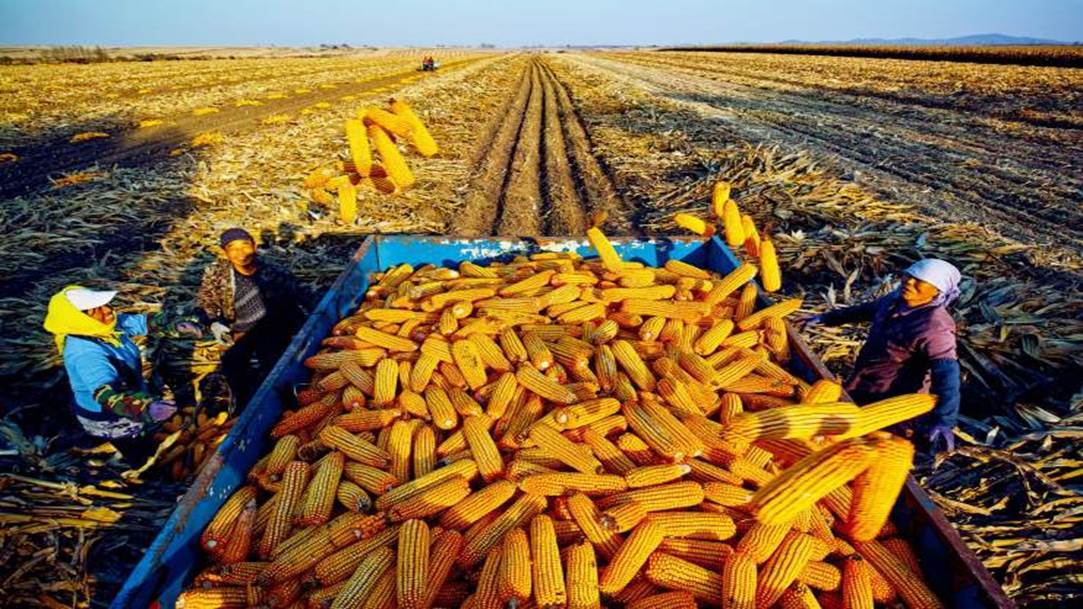
The joy of harvest

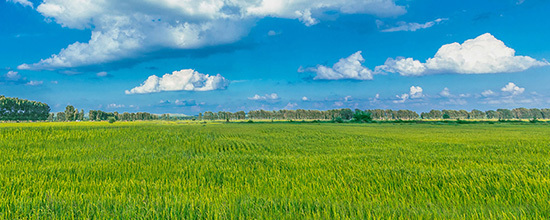
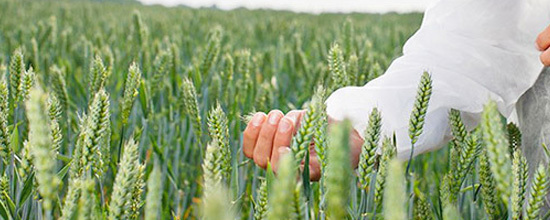


 LANGUAGE
LANGUAGE